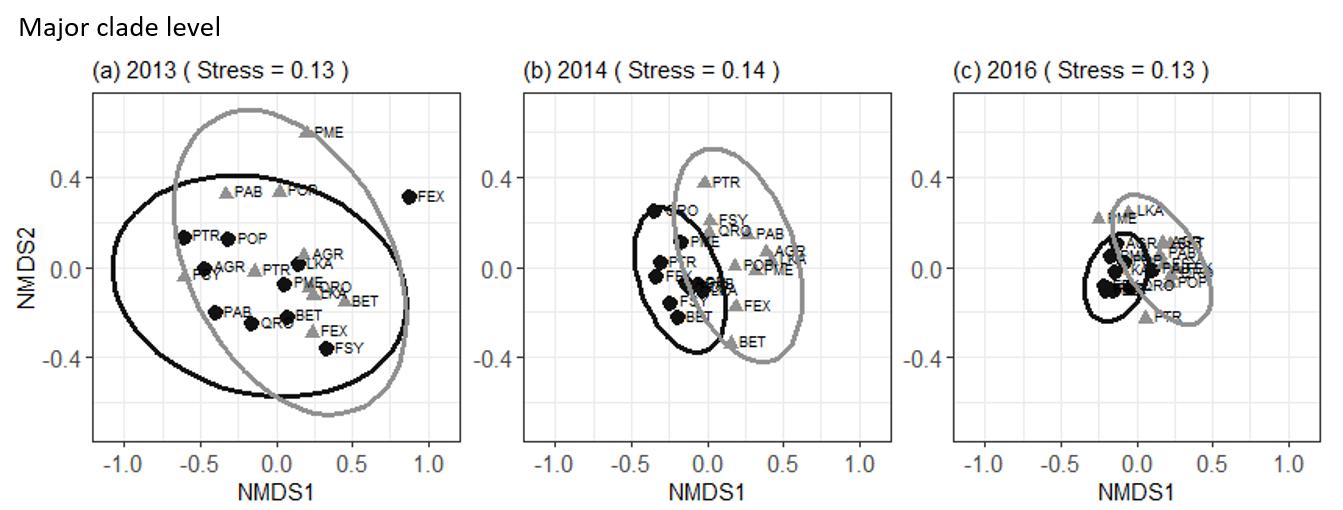Name:ZUO Juan
Tell:
Email:zuojuan@wbgcas.cn
Organization:Wuhan Botanical Garden
Researchers Reveal the Community Assembly Trajectory of Invertebrates in Deadwood: Convergence after Divergence
2020-12-09
Natural forests contain a large amount of deadwood, which is a key contributor to biodiversity. Deadwood provides habitats and resources for a huge variety of organisms including invertebrates. The habitats and resources change during decomposition by microbial and invertebrate decomposers, this in turn can influence the associated organisms. Although there are many invertebrates in deadwood, little is known about their community dynamics, despite their great importance for the forest system.
A researcher from the Functional Ecology Group at Wuhan Botanical Garden, collaborating with researchers in the Netherlands, investigated invertebrate communities in decomposing logs of 10 tree species over four years in two contrasting forests in the Netherlands. Six faunal groups were studied: Annelida (earthworms), Chilopoda (centipedes), Coleoptera (beetles), Diplopoda (millipedes), Diptera (flies, midges) and Isopoda (woodlice).
Invertebrate communities were affected by three main factors: tree species, decay stages and incubation forests. The fauna community composition in the logs initially differed across tree species in the first year, which might be caused by interspecific difference in the fresh log features and traits. The initial decay provided a variety of different microhabitats, microclimates in and below bark types, and resources, including nutrients and sugars in fresh or degrading phloem and cambium. But the composition converged as bark and wood decomposition progressed over four years of decay.
Similar patterns of divergence followed by convergence were observed at three levels of taxonomic resolution (major clades level, family level and species level of macroinvertebrates) and at different hierarchical spatial scales (among tree species within site and between contrasting forests).
This study has shown important trajectories of invertebrate community assembly in deadwood, with a key role for effects of deadwood properties on invertebrate community composition. It adds fundamental insights into the current concepts of succession, and emphasizes that more functionally diverse tree species and logs in different decay stages support rich invertebrate fauna in forest. These patterns could inform management decisions to promote forest invertebrate diversity.
This study has been published in the journal Ecosystems entitled "Fauna community convergence during decomposition of deadwood across tree species and forests".

Non-metric MDS plots of fauna communities in logs showing convergence of community composition through the decomposition years (indicated above the panels) at F site (black) and S site (grey) at major clade level. Points are the tree species with abbreviations (Image by ZUO Juan)
Invertebrate communities were affected by three main factors: tree species, decay stages and incubation forests.The fauna community composition in the logs initially differed across tree species in the first year, which might be caused by interspecific difference in the fresh log features and traits.The initial decay provides a variety of different microhabitats, microclimates in and below bark types, and resources, including nutrients and sugars in fresh or degrading phloem and cambium.
But the composition converged as bark and wood decomposition progressed over four years of decay.